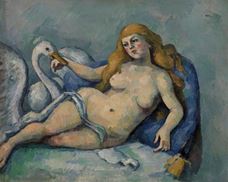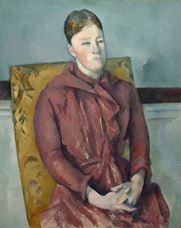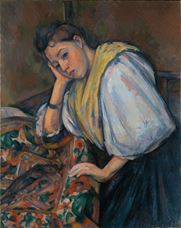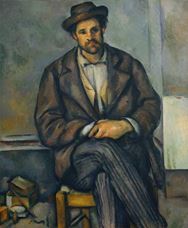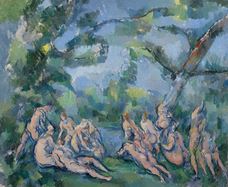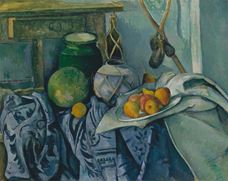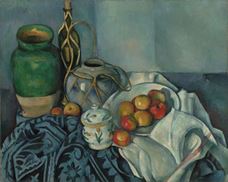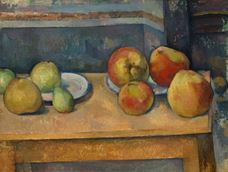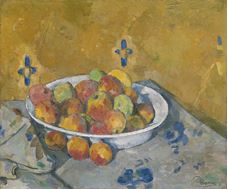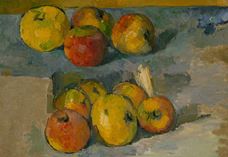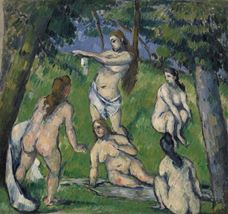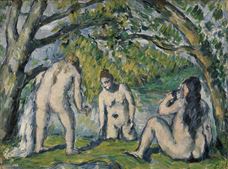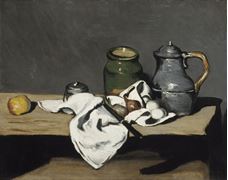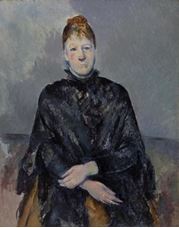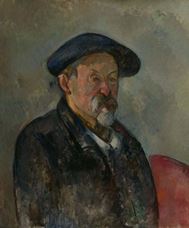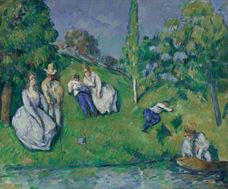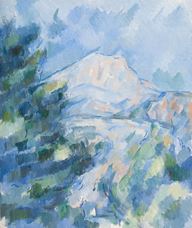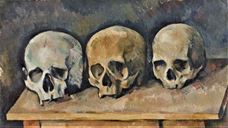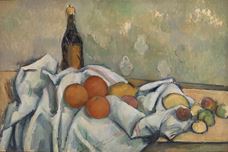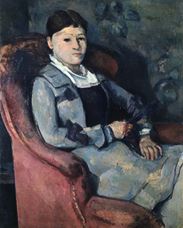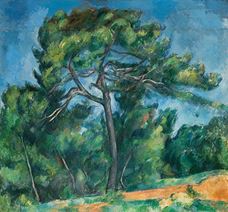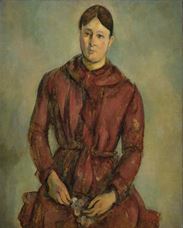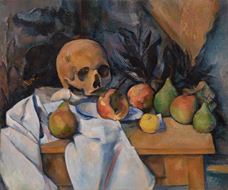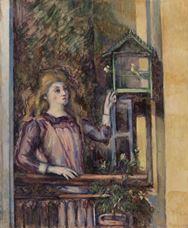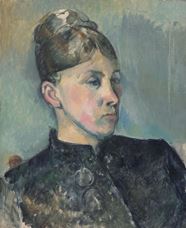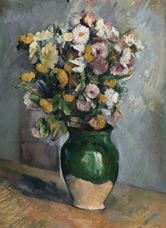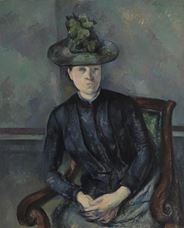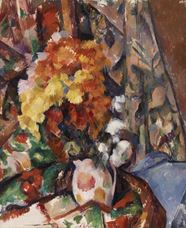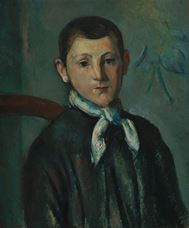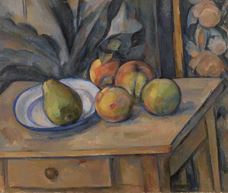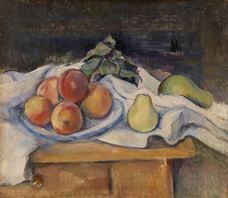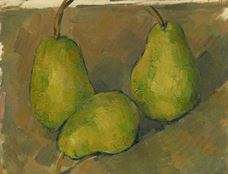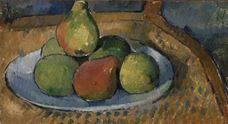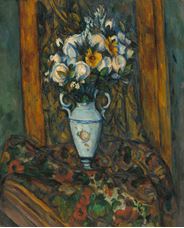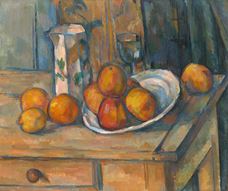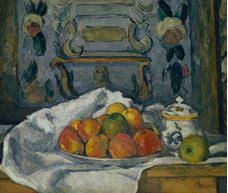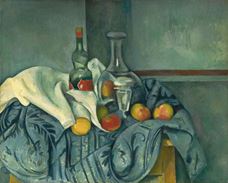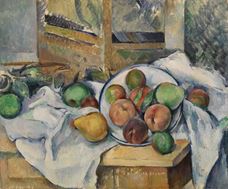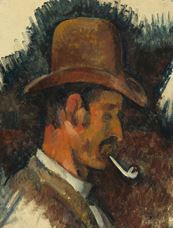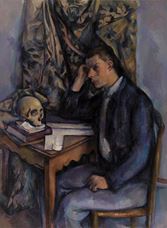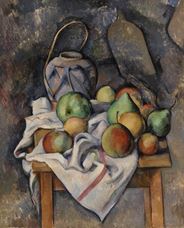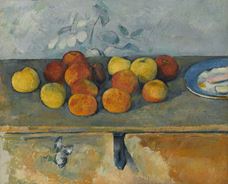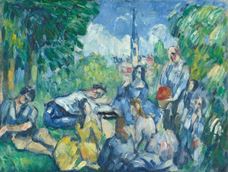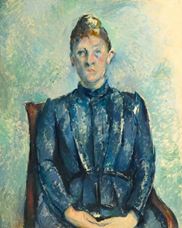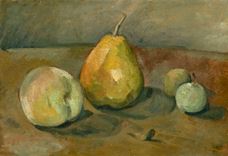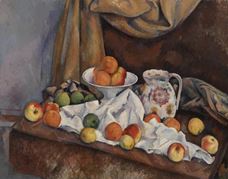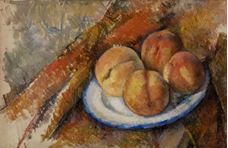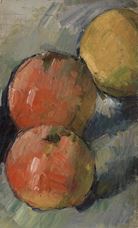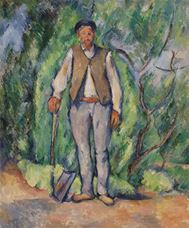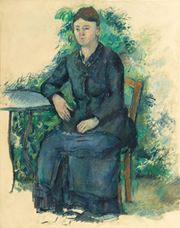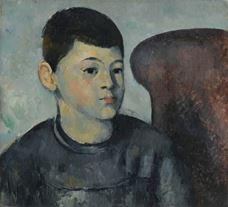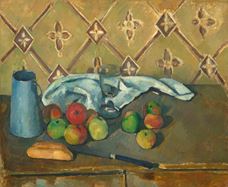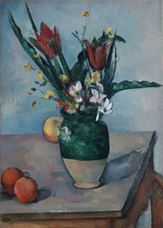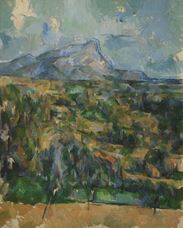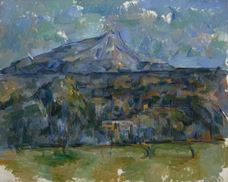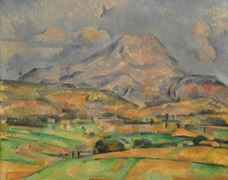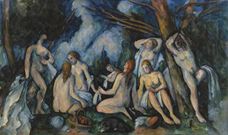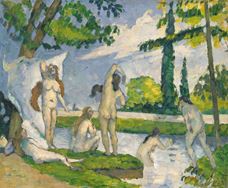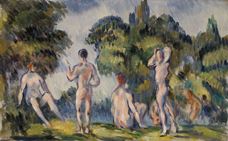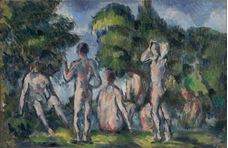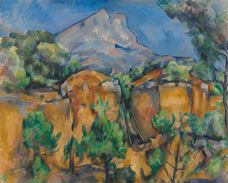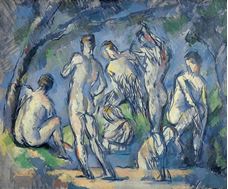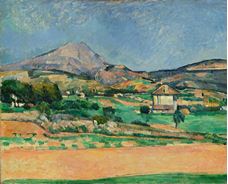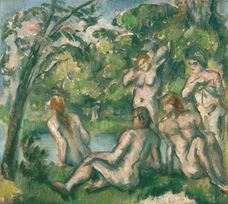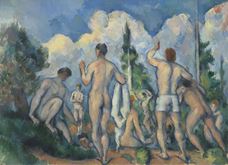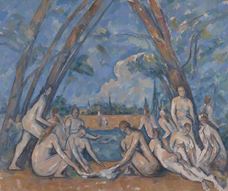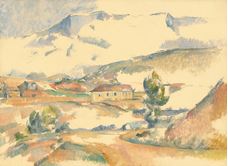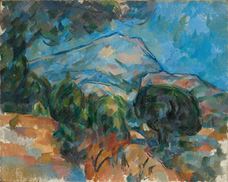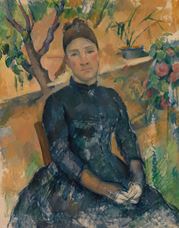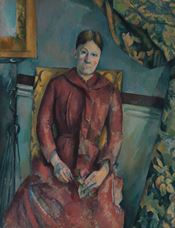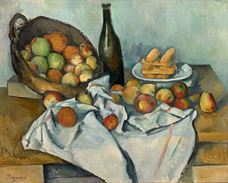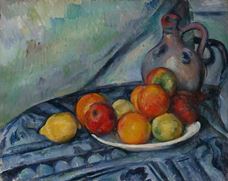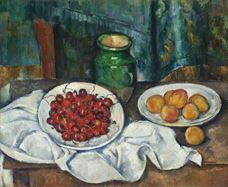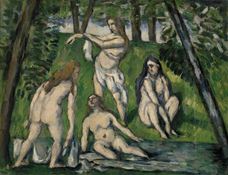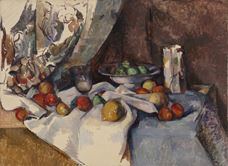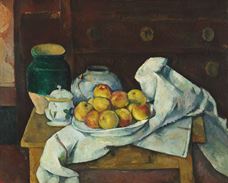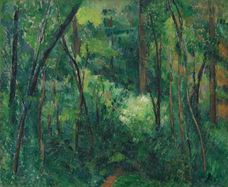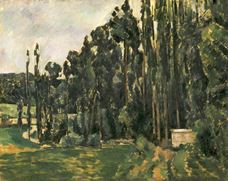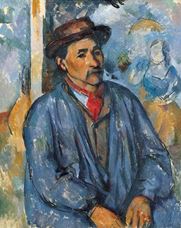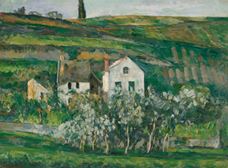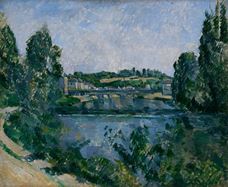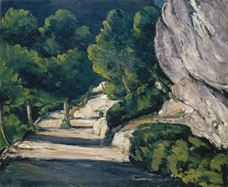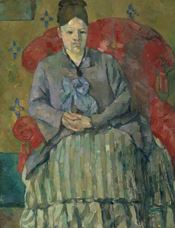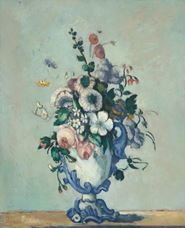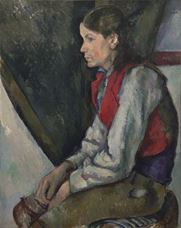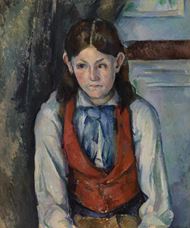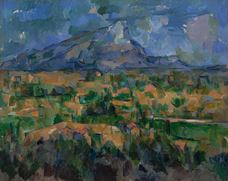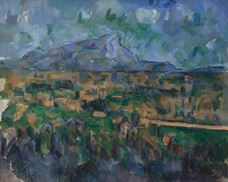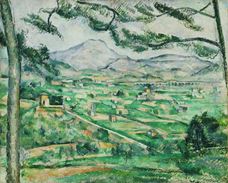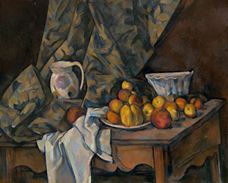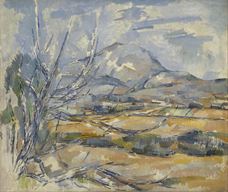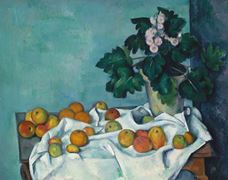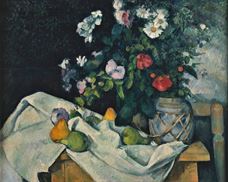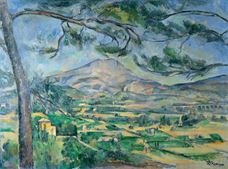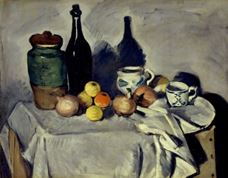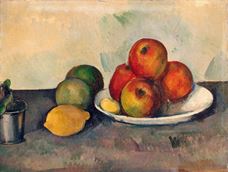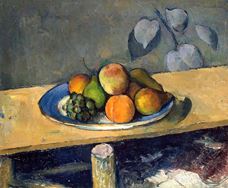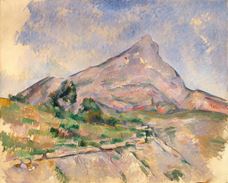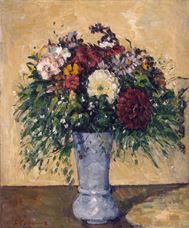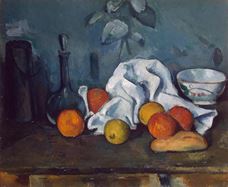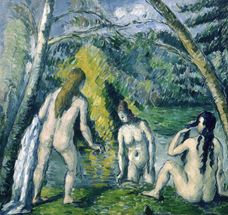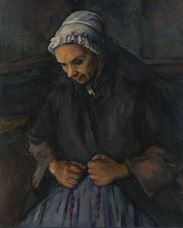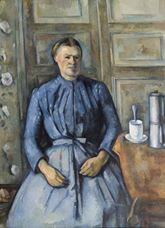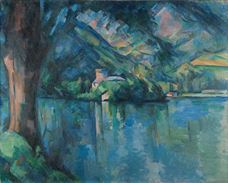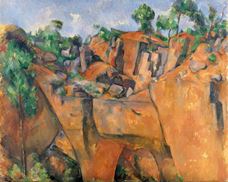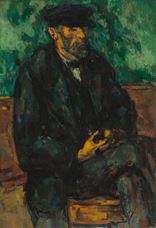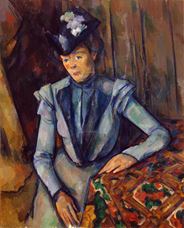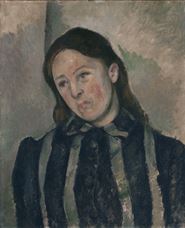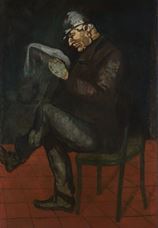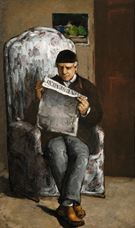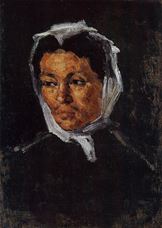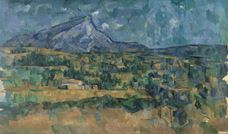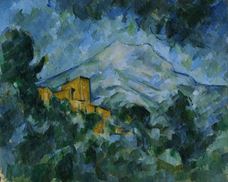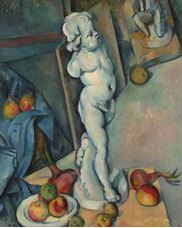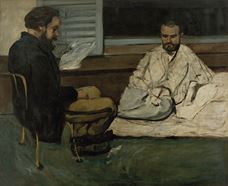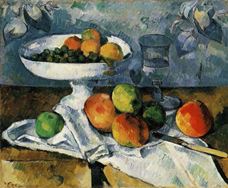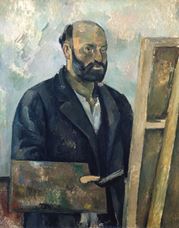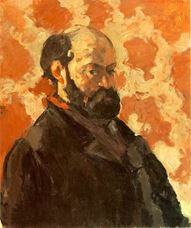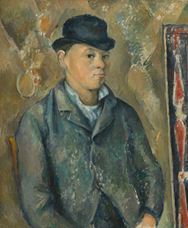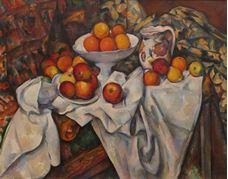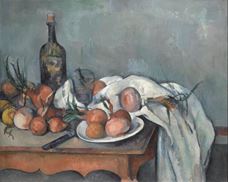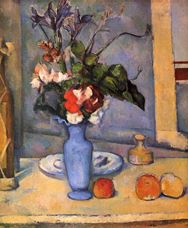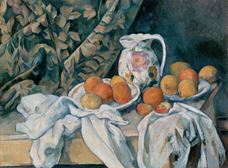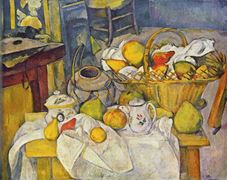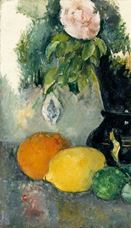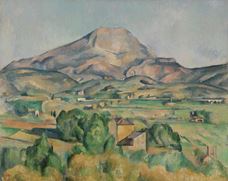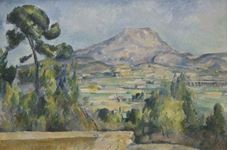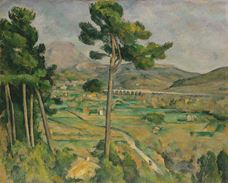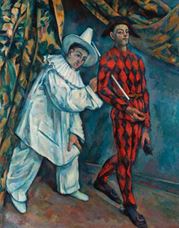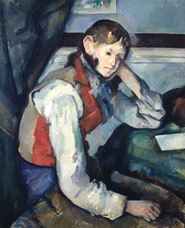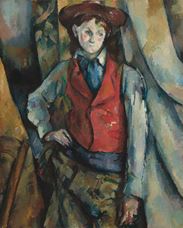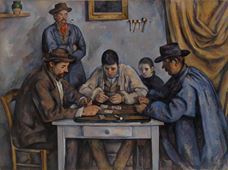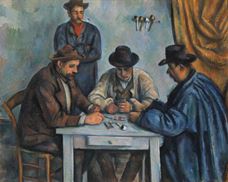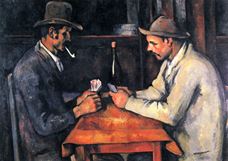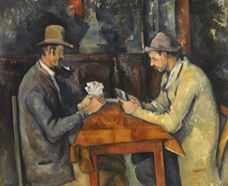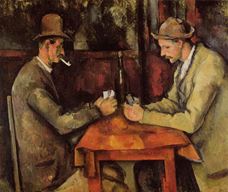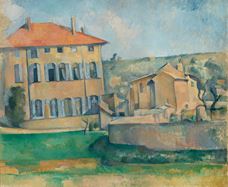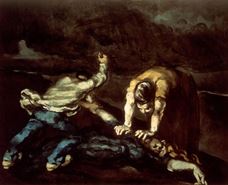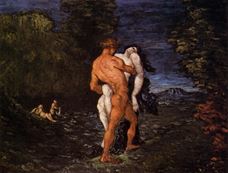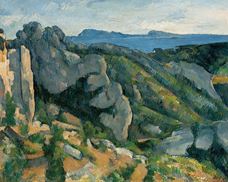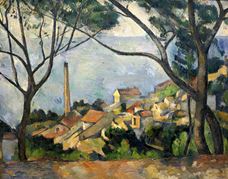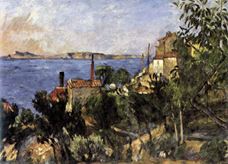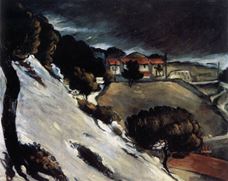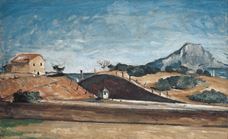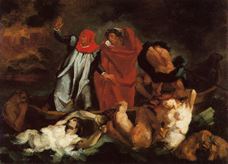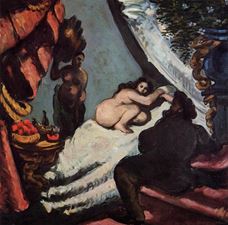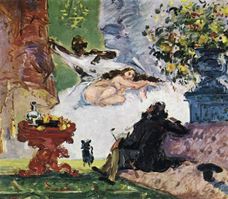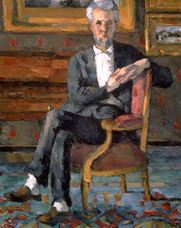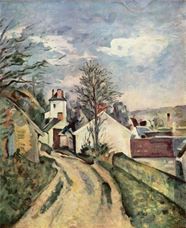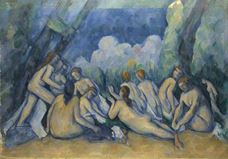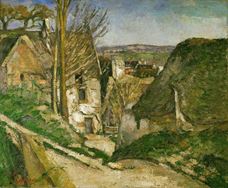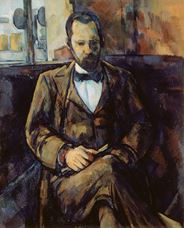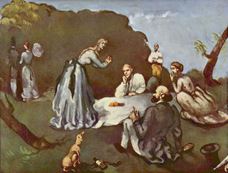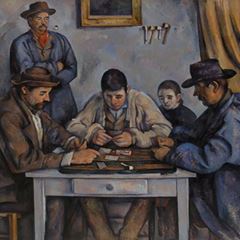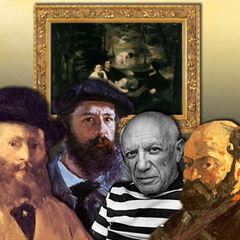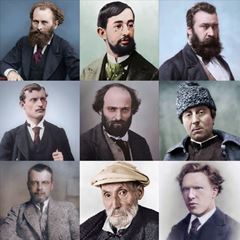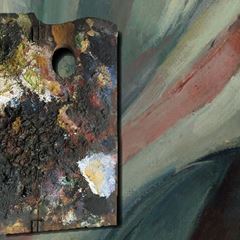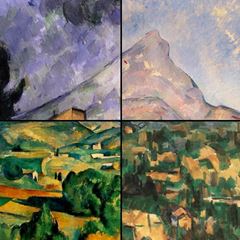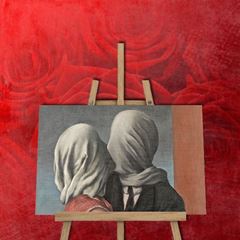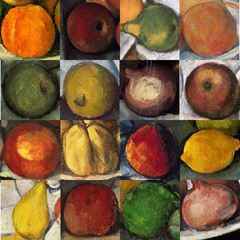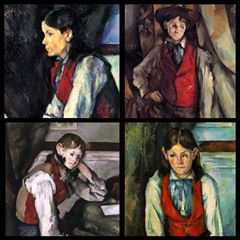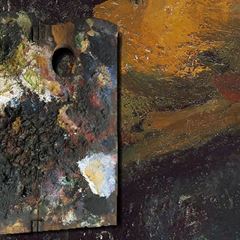On Tumblr.com, a user named "Paintters.co" colorized a lot of the black-white photos of world-famous painters. Examples of this photographic works...
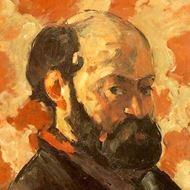
Paul Cézanne
Paul Cézanne was born on 19 January 1839 in Aix-en-Provence, south of France. He was the eldest of three children, Louis-Auguste Cézanne and Anne-Elisabeth-Honorine Aubert. After his father worked in hat manufacturing, he founded his own bank in 1848 and soon became one of the wealthiest citizens of Aix-en Provence. At the age of thirteen, Cézanne went to Collège Bourbon, Aix-en Provence's best-educated school, as a boarding student. Cézanne would later become one of the greatest French writers of the time and established a deep friendship with Émile Zola, one year younger than him. In 1857 he began attending Aix School of Painting and copied plaster models under the supervision of his teacher, Gilbert; worked with live models. Cézanne won the second prize with an oil painting in the painting contest organized by Aix painting school.
Cézanne began to think seriously about being a painter. But he couldn't convince his father. At the request of his father who wanted him to have a reputable profession, he enrolled in the Faculty of Law in Aix-en-Provence in 1858, where he was going to study for three years. In 1859, his father bought the 18th-century Jas de Bouffan summerhouse to the west of Aix-en Provence. It was Jas de Bouffan's summer house, where Cézanne spent the most important years of his life and gave his first works. During the restoration of Jas de Bouffan, which was generally not in good condition, he was allowed to paint the walls of one of the rooms in Cézanne. During the restoration of Jas de Bouffan, Cézanne drew the four-season allegory, a traditional theme for panels placed on four semi-circular niches in the hall. These paintings were Cézanne's first known works.
After Zola had graduated from school, he had gone to Paris and in his letters, he had invited Cézanne to Paris. Cézanne, who didn't want to be a lawyer, dreamed of going to his friend in Paris and becoming an artist. He finally got his father's approval and went to Paris in 1861 to study art with his friend Zola's encouragement. He worked regularly with live models for his paintings at the Suisse Academy in Paris. Soon after, he returned to Aix-en-Provence, thinking that his work was not progressing. He started working at his father's bank where he couldn't stay long. Cézanne decided to become an artist with the intense support of his father and went back to Paris in 1862.
Cézanne also worked at the Suisse Academy on a regular basis. had encounter again Camille Pissarro, a pre-impressionist, whom he had first met at the Suisse Academy, who would teach him to work outdoors. Like Auguste Renoir, Alfred Sisley and Edouard Manet, he soon met artists known as Impressionists. Cézanne was sympathetic to the French romantic painter Eugène Delacroix, who was a great inspiration among the artists of his time. He had made many copies of his paintings. It was clear that Cézanne's paintings were influenced by Delacroix, whose colors were dominated by Mor, Veronese green and Prussian blue. In addition to copies of Delacroix, Cézanne produced imaginary and violent paintings.
These dark paintings he made in his early years in Paris constituted a separate category. These subjects, generally based on literature, mythology or sacred books, were conveyed to the canvas with a very individual and striking style. These works of sexuality, seduction, kidnapping, and murder were dominated by aggression and brutality. At the end of the 1860s, after the depictions of this brute force, he made a series of manned landscapes.
In 1869, Cézanne met Hortense Fiquet, who was eleven years younger in Paris. During the Franco-Prussian war in 1870, he and Hortense traveled to Estaque, a small fishing village near Marseille, south of France. He stayed there until the war was over. In the Estaque, open-air and rural areas were the subject of his paintings. Cézanne did not differ much from his early works in terms of color use and expressionist brushstrokes during this period but was based on close observation of nature. He became a sharp turning point in Cézanne's artistic development. During the next few years, the most important issue of the paintings was the landscape. This choice has never changed until the end of his life.
In 1871, he returned to Paris. Shortly after, Hortense also arrived. The following year Cézanne and Hortense's sons, Paul, were born. In 1872, he and his family went to Pontoise, northwest of Paris. He worked with Pissarro, who lived here. Pisarro encouraged the artist to work outdoors. Pisarro laid the foundations for this method of work, which Cézanne would continue for the rest of his career. Impressed by Pissarro, Cézanne began to receive subjects directly from nature for his paintings in a few months. The use of brighter colors learned by Pissarro, regular brush strokes and close observation of nature gave Cézanne's art a new direction. With the influence of Pissarro, Cézanne began to use brighter colors. In addition to the extremely expressive subjects of the first semester, he also abandoned the painting techniques and dark colors.
In 1872, Cézanne moved with his family to Auvers-Sur-Oise, near Pontoise. His first serious patron, Vincent van Gogh's doctor and friend, Dr. Paul Gachet, was the first person to get the painting of Cézanne's work. This art-loving doctor in a short time admired Cézanne's work. Cézanne lived at the doctor's house in Auvers-Sur-Oise until the spring of 1874 upon the invitation of Doctor Gachet. That same year, Cézanne participated in the exhibition "first impressionists" in the Paris studio of photographer Gaspard Félix Nadar. Cézanne's painting "A Modern Olympia" inspired by the painting "Olympia" by Édouard Manet and the painting "The Hanged Man's House in Auvers" were featured in this exhibition.
Cézanne later went navigate between the cities of Aix-en-Province, Estaque, and Paris. In this period, he spent his time in the countryside and tried to develop the landscape technique by making outdoor pictures. He was in Aix-en-Province in general and started his first series of paintings with the theme of ’Mount Saint-Victoire, a long strip in the Aix area, from the early 1880s to the end of his life. Cézanne's sister Rose and her husband Maxime Conil were seated at the Bellevue farm in southwestern Aix-en-Provence. Cézanne made tables with variations on the appearance of the Sainte-Victoire Mountain from this farm.
1886 was an important turning point in Cézanne's life. Zola has published the novel "L'Oeuvre"(Work). In his novel Zola described a failed painter named Claude Lantier. The writer created the character in his novel inspired by Cézanne. This situation opened the way between the two childhood friends in a way, not recovered. In the same year, Cézanne's father lost his life and left a great fortune. Now he was able to live without the money shortage. Cézanne married Hortense Fiquet in Aix-en-Provence. He continued to live in his family home in Jas de Bouffan until he finished his new studio.
He chose a simple life by drawing the surrounding countryside and nearby areas. The painter painted a large number of self-portraits and portraits of his wife Hortense. In his portraits, Cézanne used the workers as well at Jas de Bouffan as models. Other than the landscape and portrait paintings that Cézanne worked on, the other great painting type was "still life". Cézanne often used the method of depicting the same object from two different angles in his "still life". He did a lot of painting on "Apple still life". "Apple still life" 's were a means of investigating the depiction of volume on a flat surface, apart from traditional perspective techniques.
In 1890 the painter went on a five-month trip to Switzerland. This was Cézanne's only overseas trip. In 1895, he opened his first solo exhibition in the gallery of art collector Ambroise Vollard in Paris. He was not widely accepted during his lifetime, and his first supporters were mostly other artists. After this exhibition, his works were evaluated in a different way. Many art-lovers had the opportunity to know the works of Cézanne, who chose to work in a secluded place in Aix-en-Provence, instead of living in the center of the art world in Paris. Critics understood the value of the painter only in the last decade of his life.
In 1897, he lost his mother. The house that Cézanne spent nearly all his life working in Jas de Bouffan was sold in 1899. Hortense was usually in Paris with his son Paul. After living with her husband and son in Paris, he moved to an apartment in Boulegnon Street in the center of Aix-en-Provence, in an with a small studio. He hired an assistant named Madam Bremond. In addition, he kept small sheds and rooms in the countryside to store his materials close to the subjects he was going to work on.
In 1901 Cezanne finally bought a plot in the north of Aix-en-Provence, on the hill of undeveloped Lauves. He built a house with a high and well-lit studio. He started working here in 1902. For the first time, he had the opportunity to work in a large studio. Still, he was staying at his house. Cézanne was taking Lauves early in the morning. After returning to town at noon, he was going back to his studio in Lauves. Cézanne limited his work in his new studio to Lauves to a number of themes that later became his best-known work. These were the "Sainte-Victoire Mountain" sights and the "The Bathers" group. In the 1880s he painted the Sainte-Victoire Mountain several times. This theme became one of the main themes of Cézanne's last period. In the "late period" paintings, which he reworked, the mountain became the main element of the painting. Cézanne, "The Bathers" topic, oil painting, watercolor, pattern, and lithograph was handled.
Cézanne spent the last seven years of his life working on three large paintings about women bathing. Apart from a version of "The Card Players" these were the largest-sized images he had ever made, and even the choice of the size indicated that Cézanne put great emphasis on these paintings. He also started to portrait outdoors. In the last years of his life, he often worked on the series of portraits of his gardener Vallier. Portraits in 1906 were the works of Cézanne's portrait painting. The portraits of Cézanne in 1906 were shown as the culmination of the "portrait painter".
Cézanne, who had pneumonia in 1906, died on 22 October in Aix-en-Provence. Two retrospective exhibitions, one year after his death, gave him the opportunity to follow his development in a comprehensive manner for the first time. In the early years of the 20th century, Cézanne's new understanding of space and its opposition to traditional rules of perspective rules became a brand-new point of departure for painting. His contributions and influence to modern art would give him the role of the "father of modern art".
Bibliography;
Nonhoff, N., (2005). Cézanne, Literatür Yayıncılık, İstanbul.
Spence, D., (2011). Büyük Ressamlar Cézanne, Birinci Basım, Koleksiyon Yayıncılık, İstanbul.
Gomm, S.C., (2014). Sanat Sanatın Gizli Dili, Birinci Baskı, İnkılap Kitabevi, İstanbul.
Farthing, S., (2014). Sanatın Tüm Öyküsü, İkinci Baskı, Hayalperest Yayınevi, İstanbul.
Altuna, S., (2013). Ünlü Ressamlar Hayatları ve Eserleri, Birinci Baskı, Hayalperest Yayınevi, İstanbul.
Eroğlu, Ö., (2014). Üç Postempresyonist Ruh Cézanne-Van Gogh-Gauguin, Birinci Baskı, Tekhne Yayınlar, İstanbul.
Yetkin, S.K., (2007). Büyük Ressamlar, Birinci Baskı, Palme Yayıncılık, Ankara.
Turani, A., (2010). Dünya Sanat Tarihi, On Dördüncü Baskı, Remzi Kitabevi, İstanbul.
1839 He was born on January 19th in Aix-en Provence, south of France.
1848 His father founded the Bank of Cézanne and Cabassol.
1852 Cézanne enrolled in the Collège Bourbon, where she met Émile Zola and Baptiste Baille.
1857 He enrolled in the Drawing School in Aix.
1858 He enrolled at Aix University to study law.
1859 His father, Jas de Bouffan bought his home.
1861 He studied art at Académie Suisse in Paris. In autumn he returned to Aix-en-Provence to work in the family bank.
1862 He went back to Paris.
1863 Académie Suisse joined once again. There he met impressionist painters like Sisley, Manet, and Renoir.
1866 He gave a painting to Paris Salon but was turned away.
1869 Cézanne met Hortense Fiquet.
1870 He was called to the army, but first went to Aix-en-Provence and from there to Estaque, where he lived with Hortense.
1872 His son, Paul, was born. Cézanne first went to Pontoise with his family. He went to Auvers-Sur-Oise by the end of the year.
1874 He joined the first Impressionists exhibition in Paris. He spent the summer month in Aix-en Provence.
1876 He participated in the second exhibition of the Impressionists in Paris. He spent the summer months in Aix-en-Provence again.
1877 He spent nearly all of his year in Paris and joined the third exhibition of the exhibitionists.
1878 Cézanne spent the whole year working in Aix-en-Province and Estaque.
1881 He worked with Pissarro in Pontoise.
1883-1885 The first time a painting was exhibited at the Salon. He went to see Renoir and stayed with Zola for a while.
1886 Cézanne's friendship with Zola is over. Horton Fiquet married Cézanne. He lost his father. Hortense and Paul spent most of their time in Paris. Cézanne moved to Jas de Bouffan.
1890 The three paintings were exhibited at the exhibition Les Vingt (the Twenties) in Brussels. He spent the spring and summer months in Switzerland.
1893-1895 Cézanne lived in Aix-en-Provence and Paris.
1895 Cézanne's first solo exhibition at the Ambroise Vollard gallery was held. He worked on paintings on "Quarry at Bibémus (Carrière de Bibémus)" and "Sainte-Victoire Mountain".
1897 Cézanne's mother died.
1899 Jas de The house in Jas de Bouffan was sold and settled in an apartment in Aix. In Paris, he opened his second exhibition at Vollard's gallery.
1901 Cézanne bought a plot in Aix-en-Provence in order to make a studio.
1902 In Chemin des Lauves, he moved a studio with views of the Sainte-Victoire-Victoire Mountain, built on hills outside Aix.
1904 His works were exhibited in Paris and Berlin.
1906 On October 22, he died in his home in Aix-en-Provence.
The Card Players - Paul Cézanne
The "The Card Players" series is one of the most important and famous works Cézanne has worked on for many years. While Cézanne describes a scene from everyday life, he creates a composition that aims to show the figure in space. It makes five versions of this scene. In the second version, it reduces the number of people from five to four and in the last three pictures from four to two. These paintings are also important in terms of the development of the painter.
"The Luncheon on the Grass" Scenes
In 1863, only half of the paintings applicant to Paris's famous painting exhibition "Salon" was accepted. Upon the complaints of the artists that were not included in the exhibition, III. Napoleon allowed him to organize another exhibition under the name of "Salon des Refusés". In this exhibition, Manet's painting "The Luncheon on the Grass" had caused a great noise and caused a scandal...
Paul Cézanne: Brush Touches
Paul Cézanne's "Still Life with Apples and Peaches", "Mont Sainte-Victoire" and "Still Life with Apples”, the details of his paintings, color transitions and brush touches;
Mont Sainte-Victoire - Paul Cézanne
The Sainte-Victoire Mountain in the east of Aix-en-Provence in southern France became one of Cézanne's last subject. In his early paintings, Cézanne used the mountain as a boundary of a large plain. When he returned to this topic in the 1900s, the mountain became the essential element of painting...
Lovers of Painters
The female models reflected by the painters on their paintings are the most important elements and indispensables for the painters. The female models in the masterpieces of many painters stole the hearts of the painters and then were reflected in their paintings as their lovers and wives. Examples of the spouses that add meaning to the lives and paintings of painters for February 14 Valentine's Day.
Still Life - Paul Cézanne
Paul Cézanne used a few simple objects in his still lifes. Still, life was a means of questioning a visual perception for him. He was able to realize his passion through his trials in which he showed an object from different angles. Cézanne was interested in the relationship between color and volume. A brightly colored round mass like an apple was an ideal object to study this relationship.
The Boy in the Red Vest - Paul Cézanne
French painter Paul Cézanne (1839-1906) painted portraits of Italian model Michelangelo di Rosa in Paris. The young with a red vest in the pictures were wearing a blue necktie and the same color belt. In contrast to the melancholic atmosphere, the sharp contrast of colors has also given vitality to the paintings.
Each of the portraits is given a different pose. Paul Cézanne's painting "The Boy in the Red Vest" became one of his most famous works.
Paul Cézanne: Brush Touches
Paul Cézanne, one of the French post-impressionists, uses strong and dark colors in his first works in which he explores striking subjects. Paul Cézanne started to use bright colors in his paintings after meeting with Impressionists. The main factor in the final composition is the color. Analyzes the basic geometric order of nature and removes superficialities from the paintings. It starts using large paint stains. These layers become larger and more abstract. These preferences can be observed in the late period landscape and figure studies. This radical approach also affects Cubists in the context of composition.













